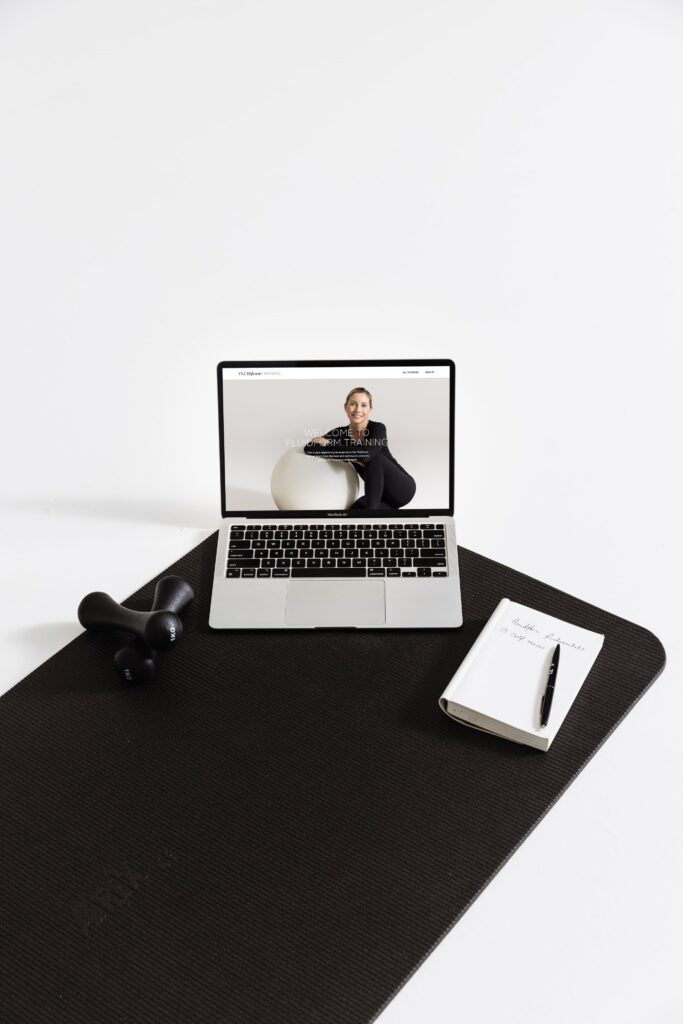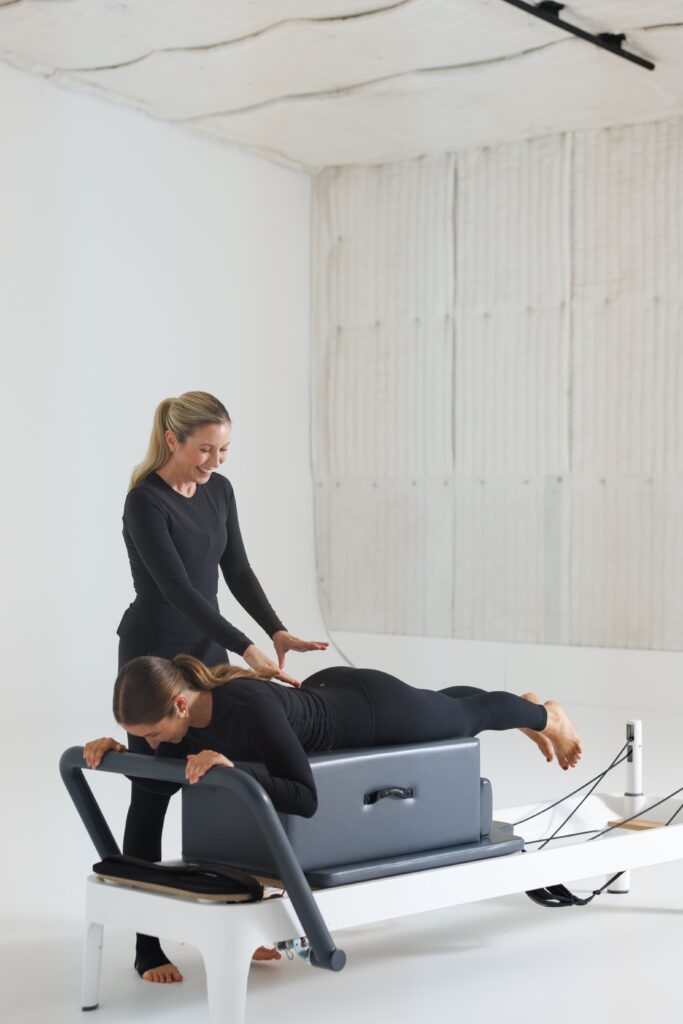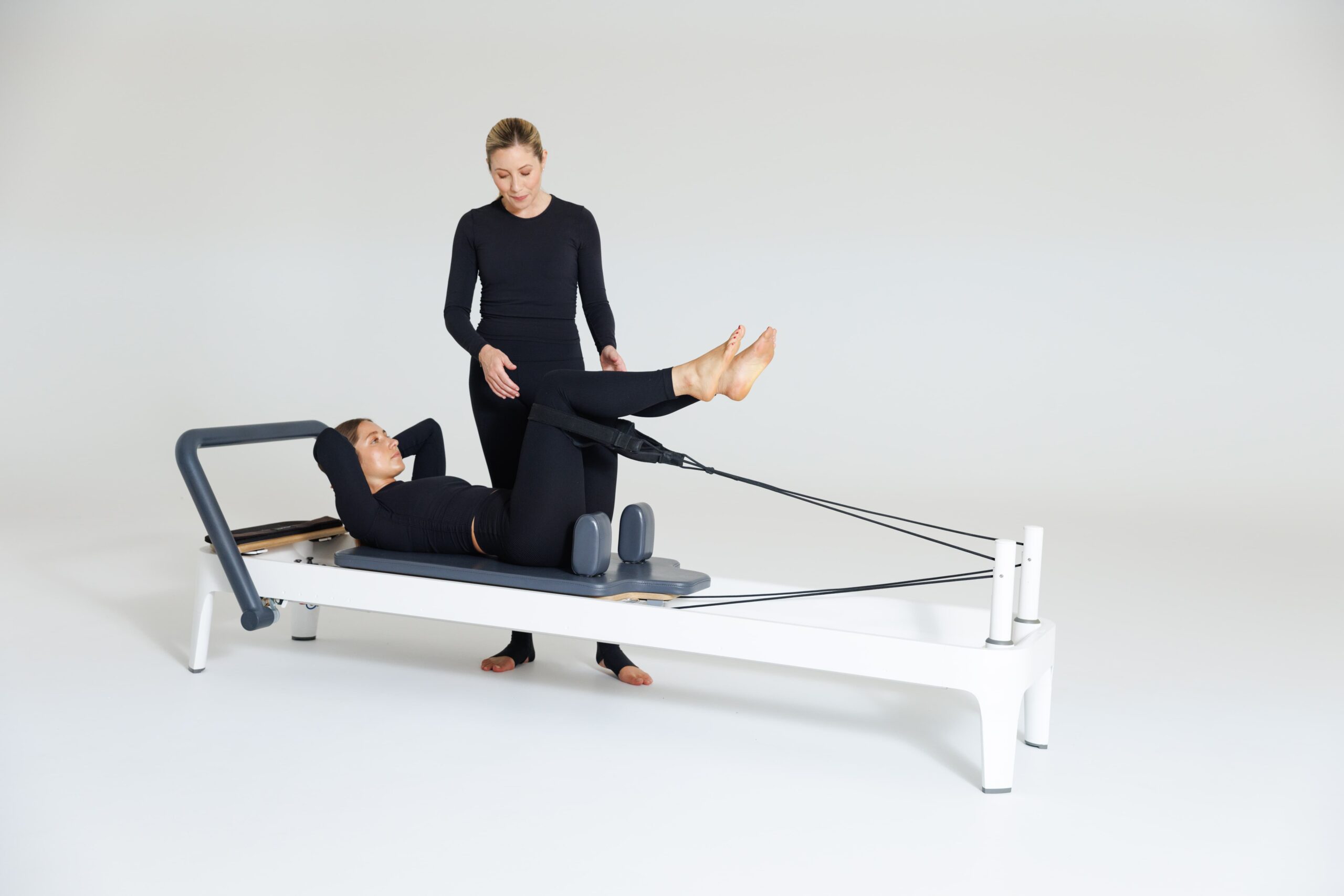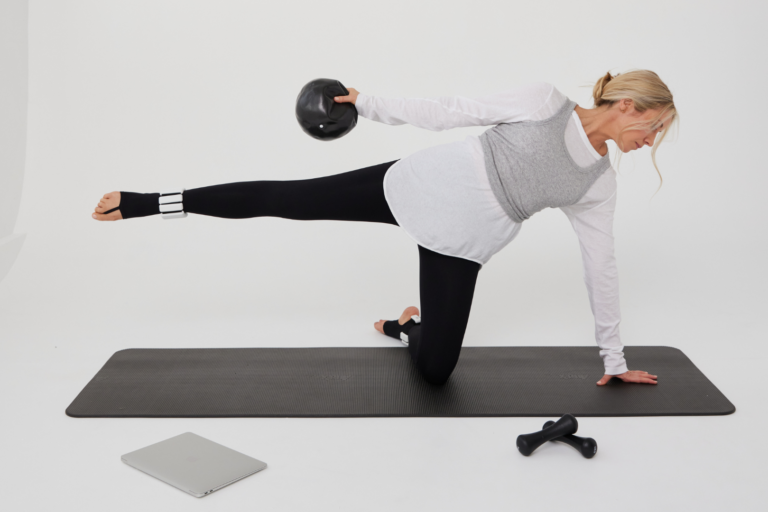Cueing is the technique of positioning and prompting your client to prepare and move through each exercise, correctly and effectively. Your cues ensure the client feels deep muscle activation. We combine cues with hands-on corrections to deepen this connection. From over 20 years of experience, this technique has proven to transform the bodies and minds of our clients. The Fluidform approach to cueing is what sets Fluidform apart from other forms of Pilates.
Why do we use cues?
- Ensure correct muscle engagement
- Allows your client to feel the muscles connect and activate
- Prevent injuries
- Improve your client’s form and technique
- To take control over the movement
What happens when we cue incorrectly, or not at all?
- Positions feel uncomfortable or awkward
- Incorrect muscle recruitment
- Failure to see results
- Poses the risk of injury
As an instructor, cueing is the most important form of communication to ensure your client works their muscles correctly and effectively every class.
Remember, every client is different, so you must cue accordingly to their needs. Some clients may understand hands-on correction more than verbal cueing and vice versa.
Throughout the years there has been cueing trends in the fitness industry which may not be as effective as we once thought.
Our principal instructor Kirsten King’s teaching method, which has been created with over 20 years of experience, clearly instructs the client to switch on the correct muscles for each specific movement with positive, detailed cueing and effective hands on correction.


Fluidform’s top cueing tips
- Advance your learning
Enhance your Pilates repertoire and knowledge by always learning more about teaching and Pilates practice. Fluidform training allows you to enhance prior knowledge and learn the FLUIDFORM way with our different workshop options. The more knowledge and skills you acquire, the more confident you will be in your teaching. This will ensure you are the best instructor you can be.
- Speak with confidence
Instructing is all about confidence, it can take a little while to find but once you are confident in your knowledge and teaching, it will feel like second nature. If you believe in what you are saying, so will your clients.
- Don’t be afraid to use hands on correction
Hands-on correction can be intimidating to a new instructor but is a very important method which can change the way a movement feels in your client. Even the slightest correction can help a client flow through a movement with ease, helping them gain confidence and progress their practice. Just make sure you have permission from your client to touch their body!
- Change your cueing style to suit the client
Every client is different, requiring different cueing styles to suit their individual needs. Don’t be afraid to switch up cueing techniques, this adaptability will make you a versatile and highly knowledgeable instructor that clients safe and supported while attending your classes.




